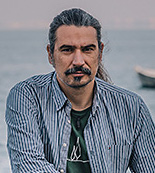The WWF is run at a local level by the following offices...
Although it lives exclusively in the sea, Posidonia oceanica is a real plant with roots, flowers, fruits, and long ribbon-like leaves. Its history began 70 to 100 million years ago when flowering terrestrial ancestors colonized the ocean floor, creating a unique marine ecosystem. Posidonia meadows offer invaluable benefits to the environment and humans, managing to survive all changes and extreme climate conditions from the time of the dinosaurs to today. Will they, however, withstand modern humans?
Posidonia plants have roots that allow them to absorb the nutrients they need to grow. They grow extremely slowly (1 cm per year) and can live up to several thousand years.
Posidonia meadows are a crucial marine habitat. They are a place where many fish and other marine species live, feed and reproduce. Additionally, Posidonia provides extremely important ecosystem services, such as carbon sequestration, acting as carbon sinks, protection of coastlines from erosion, and hosting many marine species. The economic valuation of the services provided by Posidonia per hectare of meadow far exceeds that of coral reefs and the tropical forests of the Amazon.
Grass of Poseidon
Posidonia, also known as "seagrass" as fishermen and sailors in Greece call it, is known in Greek mythology as the "grass of Poseidon", named after the ancient god of the sea.
Posidonia plants have roots that allow them to absorb the nutrients they need to grow. They grow extremely slowly (1 cm per year) and can live up to several thousand years. They are not found in river estuaries, closed bays, or on exposed coastlines due to the unsuitable conditions in these environments.
The main threats facing Posidonia meadows are sea warming, pollution, coastal development, and anthropogenic changes to the coastline (coastal and port works), as well as other mechanical works at sea (dredging and other constructions), the installation and operation of aquaculture facilities over seagrass meadows, the illegal and destructive use of bottom trawling fishing gear, and the spread of alien and invasive species such as the alien tropical algae Caulerpa racemosa and Caulerpa taxifolia which often take their place when a meadow is destroyed.
A primary and increasing threat to seagrass meadows, especially in tourist areas in our country, is uncontrolled anchoring of recreational boats such as yachts, daily excursion tour boats, and sailing boats. Anchors and chains of vessels in areas with seagrass meadows directly or indirectly destroy large expanses of them, as evidenced by the remaining dead rhizomes. Specifically, the anchors and their chains destroy the shoots, leaving behind only a layer of dead rhizomes (matte morte). However, even a dead meadow stores large amounts of carbon. The very slow rate of growth and natural restoration of Posidonia puts at risk the natural ability of the meadow to recover, especially as the pressure from anchoring remains active.
The Human Threat to Posidonia Meadows

Human activity, especially over the last 50 years, is responsible for reducing the extent of Posidonia meadows in the Mediterranean by at least one-third.
Since 2014, within the framework of the European LIFE program "Integrated protection of the Mediterranean Seal in the Northern Cyclades" coordinated by WWF Greece, together with partners we have implemented mapping actions and conducted studies on seagrass meadows in the island of Gyaros with the aim of protecting the rare and important habitat types of the marine environment of the Gyaros Marine Protected Area.
Since 2023, through the program "Mediterranean Blue Forests” we are joining forces with 4 other WWF Mediterranean offices and other specialized bodies to protect Posidonia meadows and promote their value as a carbon sink for fighting climate change. Specifically in Greece we collaborate with the Hellenic Centre for Marine Research's Institute of Oceanography (HCMR-IO) and the Cyclades Preservation Fund (CPF), to restore the health of our seas' "lungs" by prioritizing the tackling of uncontrolled anchoring as one of the main threats to Posidonia, while simultaneously supporting the development of alternative income sources for coastal communities based on activities that have a negative or even destructive impact on Posidonia meadows. In addition to working at the national level, we focus on two areas of high ecological value, and threatened by tourism, the Marine Protected Area of Gyaros and the Natura 2000 area of the Mikres Cyclades (Schoinoussa, Heraklia, Koufonisia, Keros, Antikeros).
Moreover, we are an active member of the Mediterranean Posidonia Network (MPN), consisting of 60 entities from Mediterranean countries collaborating for the protection of Posidonia meadows.

Project leader: Vangelis Paravas